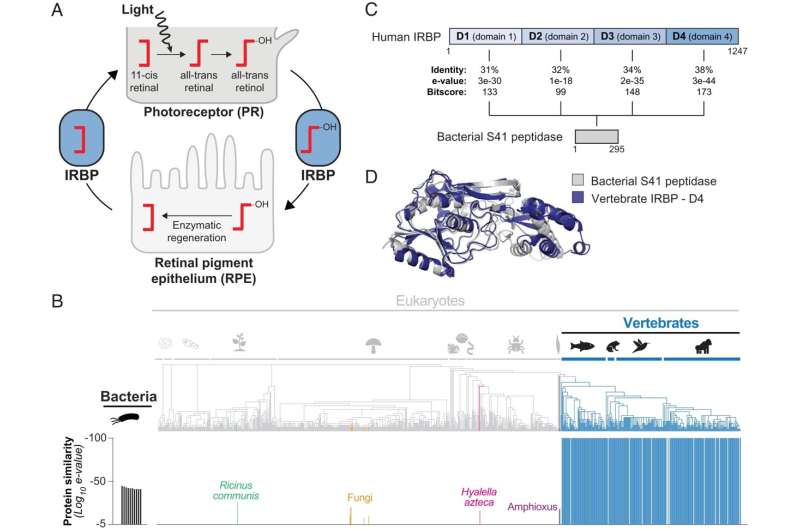April 11, 2023 report
This article has been reviewed according to Science X's editorial process and policies. Editors have highlighted the following attributes while ensuring the content's credibility:
fact-checked
peer-reviewed publication
trusted source
proofread
Evidence found of possible interdomain horizontal gene transfer leading to development of the eye in vertebrates

A group of molecular and chemical biologists at the University of California, San Diego, has found possible evidence of interdomain horizontal gene transfer leading to the development of the eye in vertebrates. In their study, reported in Proceedings of the National Academy of Sciences, Chinmay Kalluraya, Alexander Weitzel, Brian Tsu and Matthew Daugherty used the IQ-TREE software program to trace the evolutionary history of genes associated with vision.
Ever since scientists proved that humans, along with other animals, developed due to evolutionary processes, one problem has stood out—how could evolution possibly account for the development of something as complicated as the eyeball? Even Charles Darwin was said to be stumped by the question. In recent times, this seeming conundrum has been used by some groups as a means to discredit evolutionary theory altogether. In this new effort, the team in California sought to answer the question once and for all.
Their work began with the idea that vision in vertebrates may have got its start by using light-sensitive genes transferred from microbes. To find out if that might be the case, the team submitted likely human gene candidates to the IQ-TREE program to look for similar genetic sequences in other creatures, most specifically, microbes.
They found a promising candidate, a gene called IRBP. In humans, it encodes for a protein that is used in the eye as part of a process that converts light into electrical pulses that are eventually sent to the brain via the optic nerve. The research team notes that the gene is an essential component of vision in all vertebrates. IRBP is also found in microbes, most specifically in bacterial peptidases, a class of enzymes that is known for recycling proteins.
The researchers note that while IRBP and the protein that it encodes exists in all vertebrates, it does not exist in most invertebrates. This, they suggest, indicates that the IRBP gene may have been transferred from a microbe over 500 million years ago to an ancient vertebrate, leading to the development of light sensitivity, and over time, to organs such as eyeballs.
More information: Chinmay A. Kalluraya et al, Bacterial origin of a key innovation in the evolution of the vertebrate eye, Proceedings of the National Academy of Sciences (2023). DOI: 10.1073/pnas.2214815120
Journal information: Proceedings of the National Academy of Sciences
© 2023 Science X Network





















